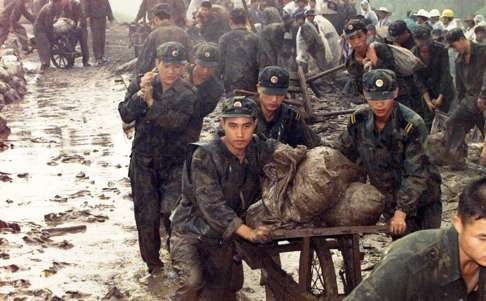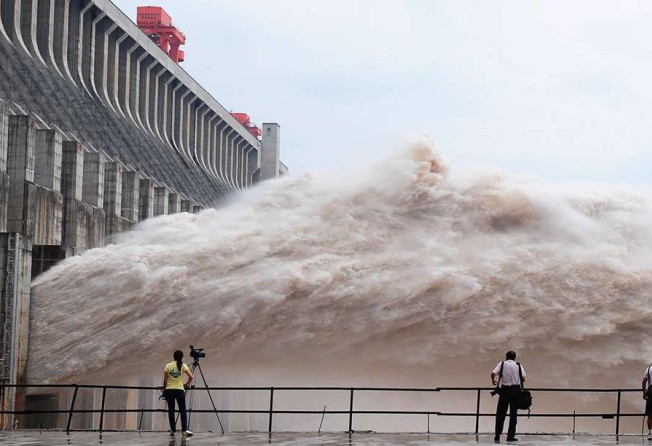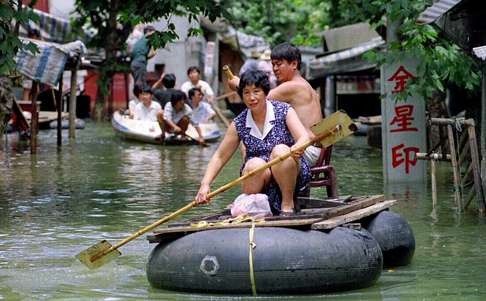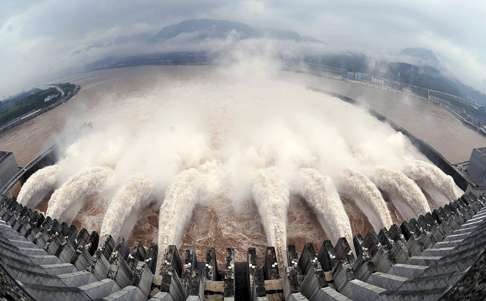
China’s Yangtze River to face catastrophic spring floods as near record El Nino strikes
Water levels may swell up to 80 per cent and could result in flooding as severe as 1998 disaster when the worst El Nino in history killed thousands and affected 220 million across 24 provinces, says flood control official

China will likely face massive spring floods due to the worst El Nino since the 1997/98 weather pattern which wreaked havoc in the Asia-Pacific region, says the state flood control authority.
The extreme flooding China experienced almost 20 years ago started at the country’s longest river – the Yangtze – and two major waterways in the northeast.
The floods, which lasted two months from June 1998, affected 220 million people across 24 provinces. Some 3,004 people died.
The incident was one of the 20th century’s three most severe flooding disasters.
And now China may see it happen again.
Liu Ning – general secretary of the national flood prevention and drought relief commanding centre and also vice-minister of water resources – said it was highly likely the Yangtze would see heavy flooding at its middle section and downstream this year, Xinhua reported on Friday.
Waterfalls in areas along the river were now carrying a higher-than-average volume of water and in many places, the flooding season had begun earlier than previous years, according to the report.
Liu said China would generally face a more severe climate this year because of the El Nino effect that started in September 2015 and was expected to wind down by the end of June.
The El Nino was impacting China in ways highly similar to climate events that caused the 1998 floods, Liu said.
Climate scientists have long noted that strong El Ninos often cause severe flooding in southern China and this one will be no exception. Drought has already struck a swathe of countries in Southeast Asia such as Indonesia and the Philippines.
El Nino is an abnormal warming of waters in the equatorial Pacific that takes place once every three-four years. While causing drought in Southeast Asia, it can cause floods in South America.
The weather pattern was named after the Christ child because the phenomenon was first noticed by anchovy fishermen from Latin America in the 19th century.
For the latest update on El Nino, click on the fortnightly forecast by Australia's Bureau of Meteorology.
Rainfall in the Yangtze River is forecast to rise 10 to 50 per cent from previous years in May, while some major branches of the river downstream will likely see 20 to 50 per cent more precipitation.
And from June to August, the entire Yangtze River is expected to see up to 50 per cent more rain, with a 50 to 80 per cent increase at its middle section.
The provinces of the Yangtze river basin account for around 60 per cent of China's rice production and a fifth of its cotton output.
Heavy floods would force the country to import rice, most likely from major Asian exporters Thailand, Vietnam and possibly India.
Heavy rains hit southern provinces including Guangdong, Guangxi, Hunan, Jiangxi and Fujian about a week ago, triggering alerts as water levels in many rivers rose alarmingly.
The national flood prevention authority sent in four emergency task forces to guide flood relief work in the affected provinces.
At the time, the water level in Gan River, a Yangtze tributary in Jiangxi, measured up to 2.52 metres above its safe limit.
A section of the highway in Jiangxi that connects Xiamen in Fujian and Chengdu in Sichuan was shut for more than a day because of mudslides, Jiangxi Daily reported.
At a recent flood-control meeting, Vice-Premier Wang Yang, chief commander of flood control in China, urged local officials to take the necessary precautions to guarantee people’s safety in the face of flooding risks at major rivers and reservoirs.
Local authorities have been ordered to gear up to deal with potential flooding as soon as possible. They were told to fix infrastructure previously destroyed in similar incidents, replenish materials needed to control floods, and update crisis-management plans.
Meteorological officials should also strengthen their monitoring of the weather and keep a close eye on the development of possible areas of flooding, Wang said.

